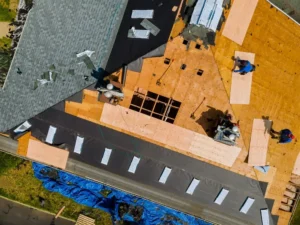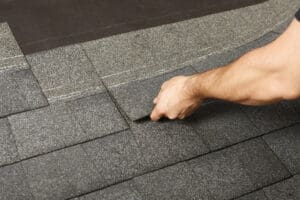The Magic Behind Flat Roof Systems
Well, hello there! Today, let’s bounce into the fascinating world of flat roof systems. Intrigued? You should be. Trust us, the journey is worth taking. When it comes to roofing, it’s not all curveballs like dome-style or peaked like a hat. Sometimes flat is where it’s at.
Unfolding the Flat Roof System Layout
Flat roof systems, despite the straightforwardness of their name, are packed with complexity. These platforms have an incredibly modest slope, less than 10 degrees! This little incline is veiled to the naked eye but plays a significant role in draining water off the roof. It’s the Meryl Streep of the roofing world – humble, versatile, and effective.
Why Flat Roofs, You Ask?
Did you know that flat roof systems aren’t just a stylish choice, but also a practical one? Dwellings with flat roofs offer an additional, usable outdoor space. Think roof garden, sun patio, or stargazing spot! Expanding upward is way simpler than moving outward. And it’s not just about plants and telescopes. Using this space for solar panels engagements, for instance, can be a significant sustainable stride toward the future.
On the commercial side, these roofs are quite efficient. They are easier and safer to inspect, maintain, and repair – *cue rooftop tea breaks*. The additional space provided can be well utilized for housing HVAC units or other industrial installations out of sight.
Key Components of Flat Roofing Systems
Just like a layered cake, the best flat roofing systems are a combination of various crucial elements, perfected over time. It starts off with a roof deck, the foundation of any roof. On top of this, there’s a layer of insulation, the roof’s trusty sidekick battling everything from scorching sun to freezing blizzards. The final layer – the waterproof membrane – is the superhero that keeps moisture from wreaking havoc on your building’s interiors. So, you see, it’s not just a roof – it’s a meticulously engineered shield!
Brace Yourselves: The Types Are Here!
Flat roof systems have rolled out variations catering to specific needs. EPDM (Ethylene Propylene Diene Monomer) systems, for instance, entail synthetic rubber roofing, ideal for enduring harsh climates. Meanwhile, TPO (Thermoplastic Olefin) roofs are white, which not only coordinates well with birds but is also stellar at reflecting sunrays, thus reducing cooling costs. Then there’s the durable Built-Up Roof (BUR) system. It’s as impressive as it sounds, with multiple layers of bitumen and reinforcing fabric. Like an onion, but without the tears!
Safety Systems: The Cherry on Top
The flat roofing universe outdoes itself with the introduction of *flat roof safety systems*. This typically includes railing systems, ensuring safety during maintenance and inspections. Makes sense, because as fun as the roof is, we certainly don’t want anyone jumping off. Remember, with flat roof systems, safety isn’t just a buzzword – it’s paramount!
The Grand Finale: Maintainance
Maintenance is the star of the show when it comes to flat roof longevity. Regular inspections, engaging professional service if you spot leaks or damages, and maintaining the drainage system are both vital aspects to keep in mind.
In the delightful realm of *flat roofing systems*, there’s a lot in store. From their design and types to their added values, understanding flat roofs can give you a new perspective when looking at buildings – literally. Ready to climb up and take in the potential of a roof that’s more than just a shield? We thought so.







